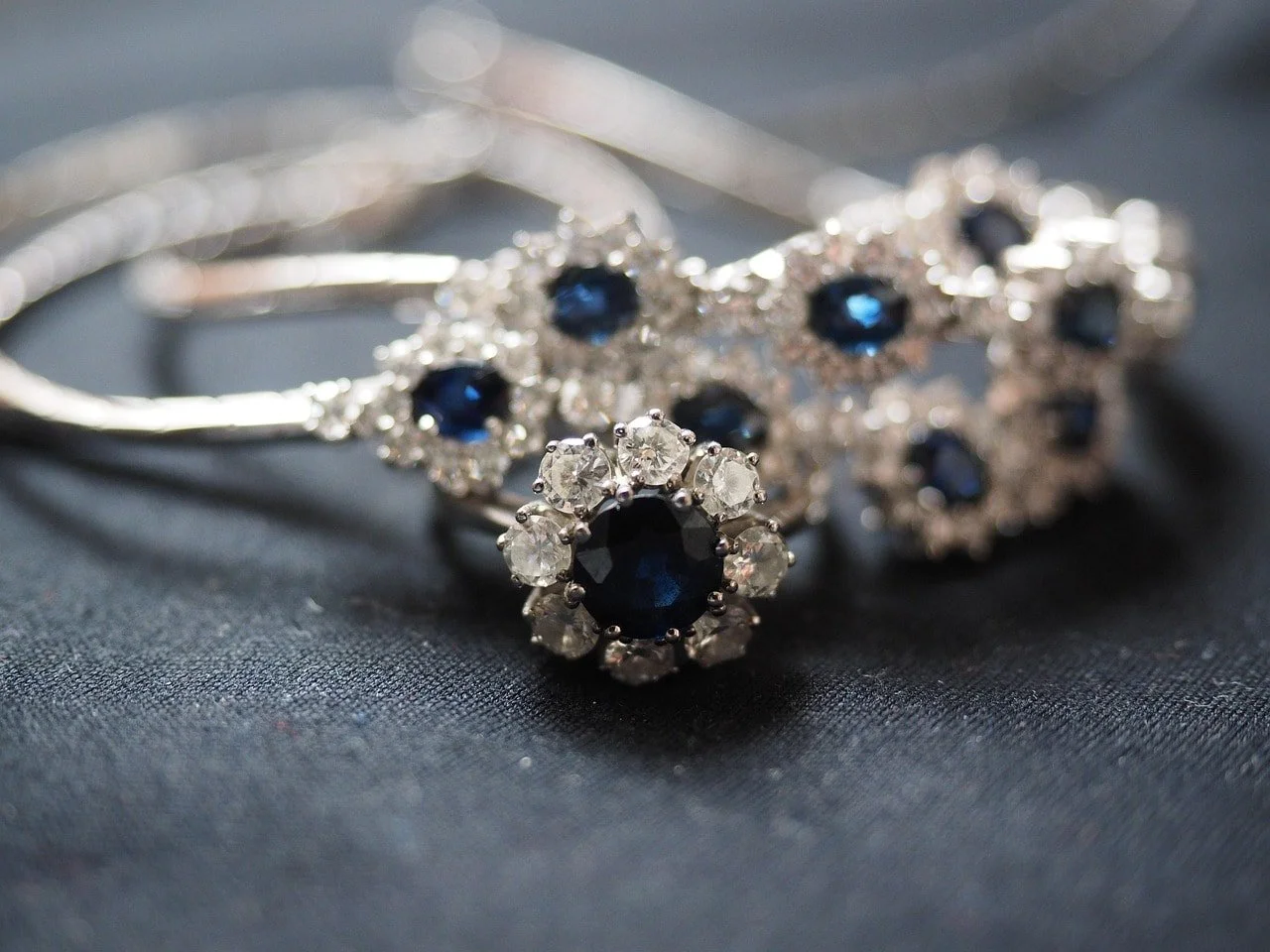A Gemmaphile’s Guide to the Different Types of Sapphires
There are few things more hypnotic than the gleam of a sapphire. Regal yet approachable, mysterious yet grounded, sapphires are not just one of the most beloved gemstones in the world, but a universe unto themselves. If you’ve ever wondered why some sapphires are electric blue while others blush with sunset pink, or why a single stone can change color altogether, you, dear reader, might just be a gemmaphile in the making.
In this guide, we’re diving deep into the different types of sapphires, their colors, their origins, and the unique traits that make each one as captivating as a couture gown in motion.
What Is a Gemmaphile?
First things first—what exactly is a gemmaphile? Quite simply, it’s someone who is passionate about gemstones, and particularly fascinated by their colors, origins, symbolism, and beauty. If you find yourself scrolling endlessly through sapphire engagement rings Singapore or obsessing over the shade of a cornflower blue sapphire, you’re in good company.
More Than Blue — Understanding Sapphire Diversity
Let’s debunk the biggest myth first: sapphires come in far more colors than just blue. While the blue sapphire is undeniably iconic, sapphires actually occur in a wide range of hues—from pastel pinks to sunny yellows, vibrant greens to ethereal whites.
Their colors are influenced by trace elements within the mineral corundum, the crystal that forms a sapphire. Tiny variations in iron, titanium, chromium, or vanadium lead to the dazzling spectrum we see in the types of sapphires and their expressions.
Types of Blue Sapphires
When most people picture a sapphire, it’s blue—and not just any blue, but that unmistakable, velvety, regal kind that seems to shimmer with secrets. But even within this classic category, there are multiple shades and styles, each with its own character, rarity, and charm. Let’s explore the most iconic types of blue sapphires and what sets them apart.
Royal Blue
As the name suggests, royal blue sapphires are all about intensity. Deep, saturated, and commanding, these stones are often found in the finest high jewelry houses. The color is strong but not dark—like the perfect velvet tuxedo.
Cornflower Blue
The darling of vintage collectors and antique lovers, cornflower blue sapphires are medium-light in tone with a touch of violet. This hue is especially prized from Sri Lanka, where cornflower blue sapphire has a glowing translucence that feels lit from within.
Kashmir Blue
A legend among blue sapphires, Kashmir sapphires possess a velvety texture and soft, almost dreamlike quality. They’re incredibly rare today—most were mined in the 19th century—and are considered some of the most desirable types of sapphires on Earth.
Fancy Colored Sapphires
Think sapphires are only blue? Think again. Thanks to subtle variations in trace elements, sapphires come in a dazzling spectrum far beyond royal or cornflower. These are known as fancy colored sapphires, and they’re rewriting everything we thought we knew about the stone.
Whether you're drawn to soft pastels or bold sunset hues, the types of sapphires and their diverse colors make them one of the most versatile gems in modern fine jewelry.
Pink
Pink sapphires are the darlings of modern romantics. Ranging from the palest blush to vibrant fuchsia, they’re often chosen as unique alternatives to engagement rings. The presence of trace elements like chromium gives these sapphires their charming hue.
Yellow & Orange
Yellow sapphires are joyful and radiant, while orange ones burn with sunset fire. Both are increasingly sought after by designers looking to break from the traditional. Their vivid colors are due to iron content and are often enhanced with heat treatment.
Padparadscha
Ah, the unicorn. Padparadscha sapphires are a rare blend of pink and orange—think peach blossom at golden hour. The name padparadscha is derived from the Sinhalese word for lotus flower, and these stones are often found in Sri Lanka and Madagascar.
Green
Often overlooked but utterly unique, green sapphires range from mint to forest. These sapphire colors arise from iron and can be either moody or fresh, depending on the cut.
Purple
Purple sapphires are mysterious and elegant, frequently mistaken for amethysts but far more durable. Their allure lies in their royal richness and subtle flashes of red or violet.
White
Uncolored but no less luminous, white sapphires are sleek and modern. They're a brilliant diamond alternative and pair beautifully with a minimalist aesthetic.
Phenomenal and Rare Sapphires
Some sapphires don’t just sparkle—they perform. Known in the gem world as “phenomenal,” these rare stones possess optical effects that seem almost otherworldly. Whether it’s a shimmer of starlight or a complete shift in hue, these types of sapphires captivate collectors and connoisseurs alike. Let’s begin with one of nature’s greatest magic tricks: the color-changing sapphire.
Color Change
Yes, they exist. Color change sapphires appear blue in daylight and purple under incandescent light. This natural phenomenon is both rare and mesmerizing, like owning two sapphires in one.
Star Sapphires (Asterism)
Star sapphires are gems that exhibit a shimmering star pattern across their surface—a phenomenon known as asterism. These star sapphires, especially black star sapphires, are prized for the way they catch and reflect light in a celestial dance.
Parti-Colored
Parti sapphires are multicolored marvels, often showing green, blue, and yellow in a single stone. Completely natural and unenhanced, no two parti-colored sapphires are ever alike.
Treated vs Untreated Sapphires
Most commercial sapphires have been treated—usually with heat—to enhance their color and clarity. This process is permanent and widely accepted, but untreated sapphires are far rarer and command higher prices. If you’re buying a sapphire, always ask whether it has been treated and request certification.
Natural vs Synthetic Sapphires
Lab sapphires share the same crystal structure, hardness, and color as natural ones. The difference lies in the origin. While natural stones are mined from the earth, synthetics are grown in a lab. They're perfect for buyers who prioritize ethical sourcing and budget flexibility, but natural gems retain more value over time.
Origins of the World’s Most Coveted Sapphires
Just as the provenance of a couture gown elevates its value, the origin of a sapphire can tell you everything—from its rarity and richness of color, to the legends it may carry. Some regions produce brighter hues, others bring velvety depths, but all contribute to the incredible diversity of sapphires and their character.
Kashmir
As mentioned earlier, Kashmir sapphires are among the rarest of sapphire varieties. Their unique 'velvety' appearance is due to microscopic inclusions that diffuse light.
Sri Lanka (Ceylon)
Sapphires from Sri Lanka—also known as Ceylon sapphires—are known for the brightness of their color and excellent clarity. The country is also home to the famed padparadscha sapphire, adding to its legendary status.
Madagascar
A rising star, Madagascar now produces some of the most vibrant and diverse types of sapphires on the market today. From blue to pink to parti, this island nation is reshaping the sapphire landscape.
Montana (USA)
The American classic. Montana sapphires are beloved for their steely blues and greens, often in smaller carat sizes. Perfectly suited for engagement rings, they offer a rustic elegance.
Thailand & Australia
Both countries produce darker, inky blue sapphires that are more affordable but equally striking. They’re great options for the bold and budget-conscious alike.
How to Choose the Right Sapphire
When shopping for a sapphire, consider more than just the color. Think about cut, carat, origin, and whether or not you're drawn to traditional or fancy colors. Does the velvety blue of Kashmir captivate you? Or do you find yourself drawn to the peach glow of padparadscha sapphires?
Your perfect stone isn't just about appearance—it's about resonance. Let your choice reflect your story.
Buying Tips for Gemmaphiles
Falling in love with a sapphire is easy—but buying one? That’s where a true gemmaphile shines. Whether you’re adding to a collection, searching for the perfect sapphire engagement ring, or finally treating yourself, knowing how to navigate the world of sapphires ensures your choice is as wise as it is beautiful.
From understanding price factors to selecting a reputable source, here are a few elegant essentials to help guide your journey.
Certification
Whether you're eyeing a sapphire engagement ring or a collector's piece, always ask for certification. Labs like GIA, AGL, and GRS provide trustworthy reports on origin, heat treatment, and authenticity.
Price Factors
The price of sapphires varies depending on color, clarity, origin, and whether or not the stone is untreated. Kashmir, Ceylon, and Madagascar stones command higher prices, as do untreated or uniquely colored sapphires.
Trusted Sellers
Not all jewelers are created equal. Buy only from trusted sellers who offer full transparency. For those in Singapore, Arte Oro offers a refined selection of certified sapphires and bespoke engagement rings worth falling in love with.
Conclusion
Whether you’re just discovering your passion for sapphires or are already deep in the glittering rabbit hole, there’s no denying that the different types of sapphires offer endless allure. From classic blues to avant-garde parti hues, every stone has a story—and every gemmaphile knows, the thrill is in the search.
So go ahead. Explore. Fall in love. And perhaps, find your forever sapphire.

